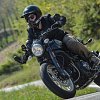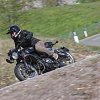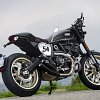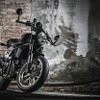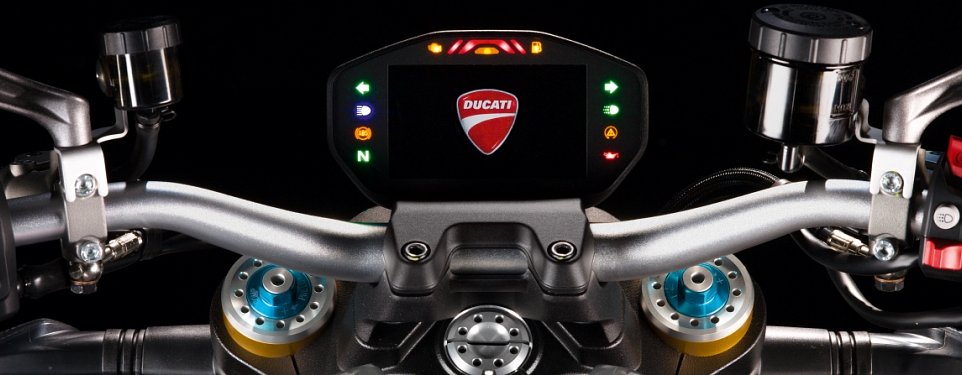Ducati has now expanded the Scrambler line to six models, including the Sixty2, Icon, Classic, Full Throttle, Desert Sled and — the one we're here to talk about today — the Café Racer.
In my opinion, the Scrambler Café Racer is visually one of the most distinct in personality of the bunch. Upon first approach, the machine encompasses all the essentials of a modern café racer. Most notable is the short flyscreen, clip-on handlebars, café racer seat, number plate, black coffee paint color and gold wheels. As soon as you climb on board, you could easily imagine yourself back in the 1960s in an all-out race amongst the Ton-Up Boys of London.
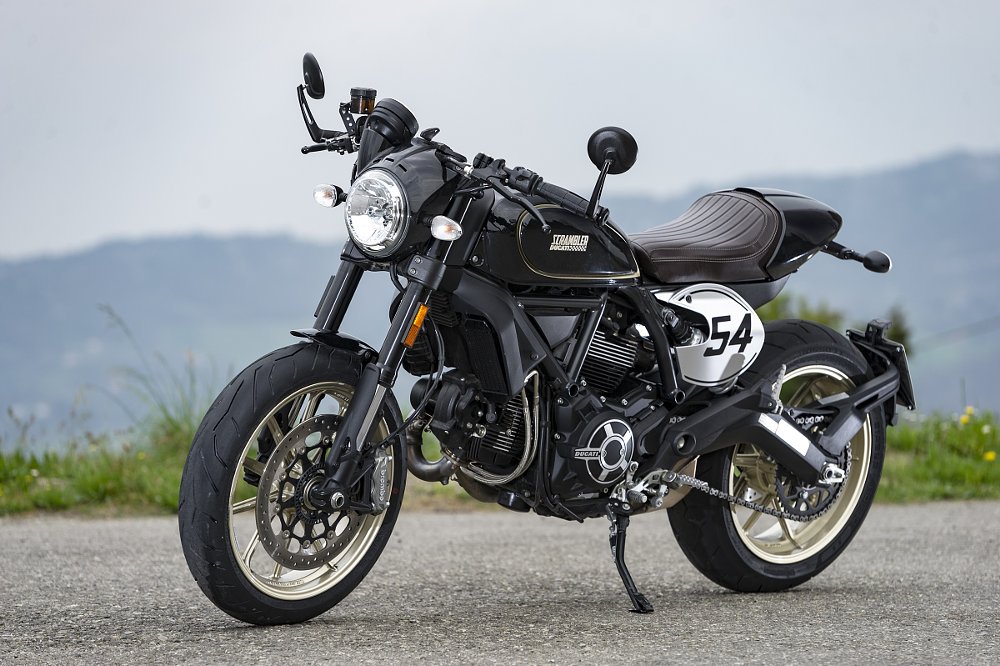
So how does she perform?
Last week, I had the opportunity to visit Bologna, Italy, to test this machine on its home soil. I can’t think of a better place to test both your own personal and a machine’s cornering abilities than the twisty roads of Italy.

After a few hours in the saddle, I can attest to the style, ease, power and pure joy that this bike delivers. The now-familiar 803 cc, air- and oil-cooled twin engine that’s the heart of the Scrambler line provides more than sufficient muscle to get you into just enough trouble, sending you deep into every corner. You can also confidently and smoothly accelerate on the straights and easily maintain highway speeds. I should mention there is a new CPU flash used on this model and a new throttle design to smooth out the power delivery compared to its predecessors.

Comfort? It’s a café racer
Compared to the first and most “standard” model in the Scrambler line, this bike places the pilot in a pure café racer position, with your upper body lower and further forward. The seat is about 31.7 inches high, which is an increase of more than half an inch over the Icon. The handlebar is six inches further forward and almost seven inches lower, a big difference. While riding, I did not find the position to be overly aggressive and the seat was pretty soft and comfortable. Truth is, the stance is sexy and definitely beyond fun for shorter and faster rides. If that’s what you are looking for, you found the perfect bike.
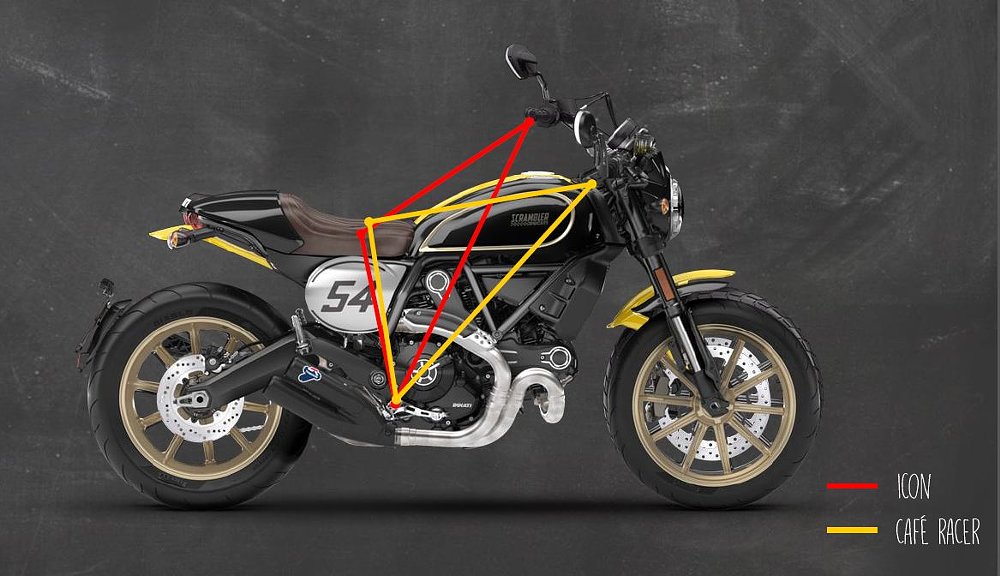
But, if you are riding long distance, I would personally opt for the more upright stance of one of the other Scrambler models. It’s also worth mentioning that the bike threw off a fair amount of heat, but this could perhaps be compensated with wraps or other modifications.
Beyond the rider’s comfort, the Café Racer offers other convenience features, such as a USB port and underseat storage.
How does she handle?
Of course, a café racer is more about style and handling than comfort. We see more changes from the Icon in that category, too. The wheelbase measures 56.5 inches (0.35 inches shorter than the Icon), rake is 21.8 degrees (2.2 degrees less) and trail is 3.7 inches (0.7 inches less).

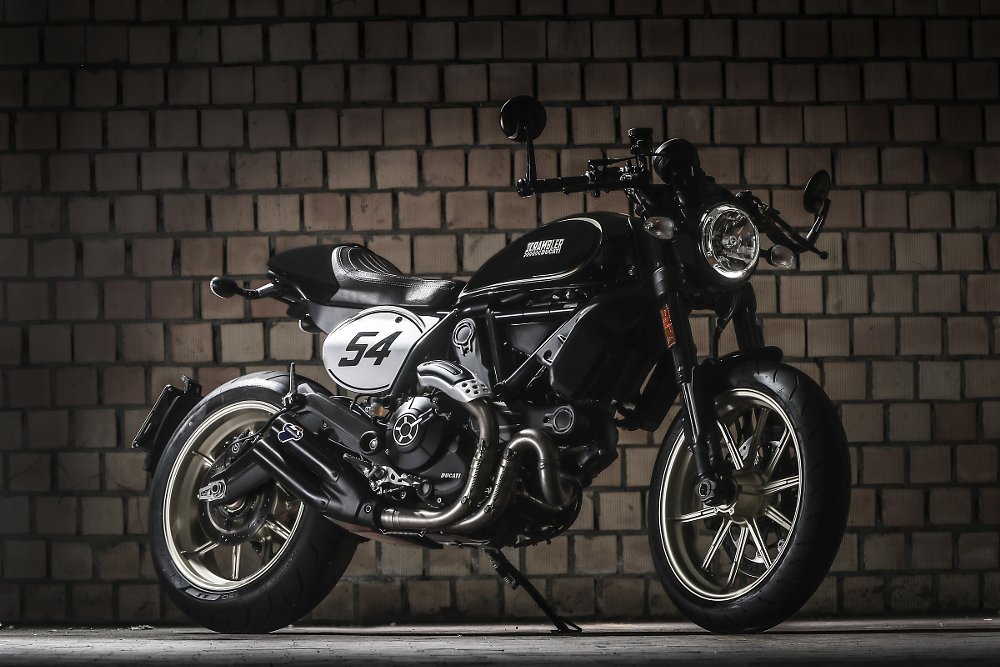
The story behind the 54
Why a 54 number plate? Ducati has a rich history in motorcycle racing and number 54 is tied to one of their legendary racers, Bruno Spaggiari. In 1968, he raced the Mototemporada Romagnola on a Ducati with an engine derived from the original Scrambler's single-cylinder 350 cc power unit. It is important to highlight this to understand the history and spirit of this bike. It is both sexy and nostalgic. Nevertheless, it might be wise to make this number plate a customizable piece so that a group of riders can differentiate their bikes or slap on their personal race numbers.

Conclusion
Overall, this model is a prime example of a modern Café Racer and it packs a load of character and joy into its little frame. It’s clear that Ducati took their time to incorporate and balance the elements of style and performance along with a fair price tag of slightly over $11,000.


If you do want to put your fingerprints on it, however, Scrambler Ducati has developed an array of wearables and bolt-on customizations to accompany the bike, including performance choices such as the dual Termignoni exhaust.
The Scrambler Café Racer may look the part of 1960s London, but the Ton-Up Boys never imagined ABS brakes like these or tires this sticky, much less a USB port or an LCD speedometer. By nailing the looks, keeping it light and offering flexibility like the switchable ABS, Ducati built a Café Racer that both relatively new riders and advanced riders will enjoy.





